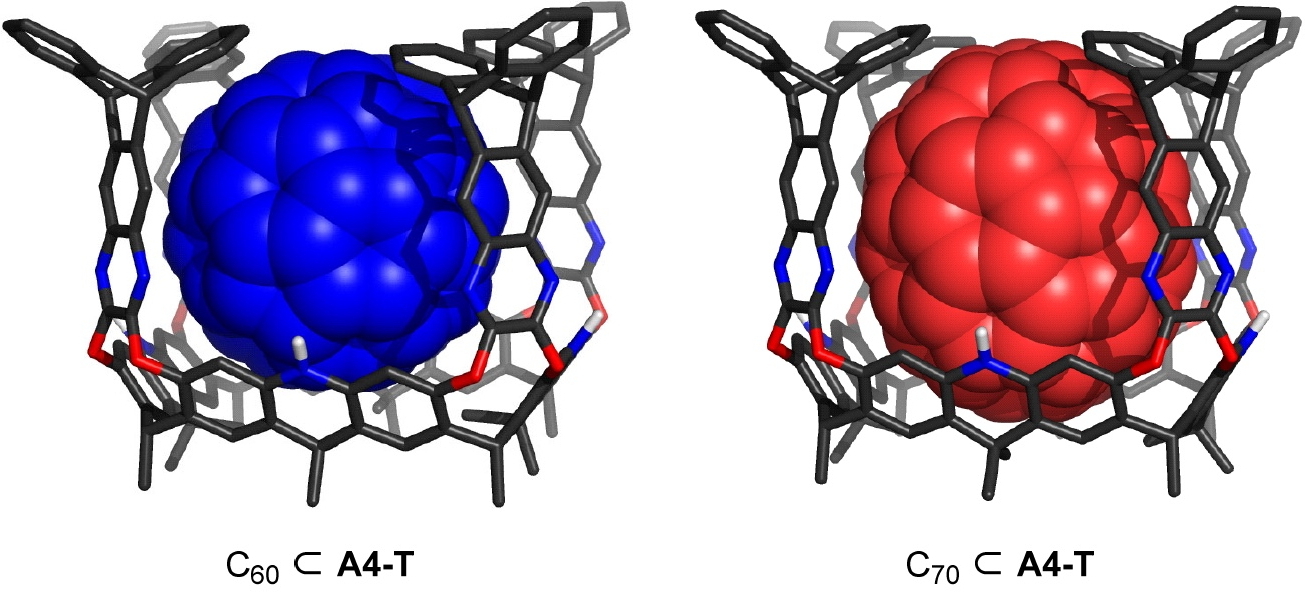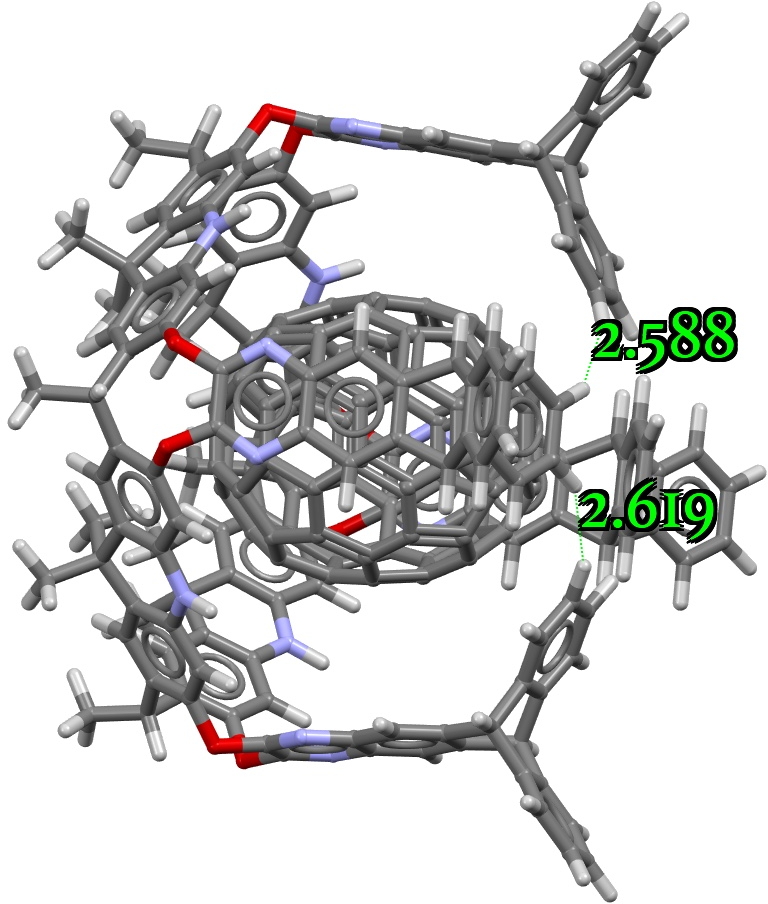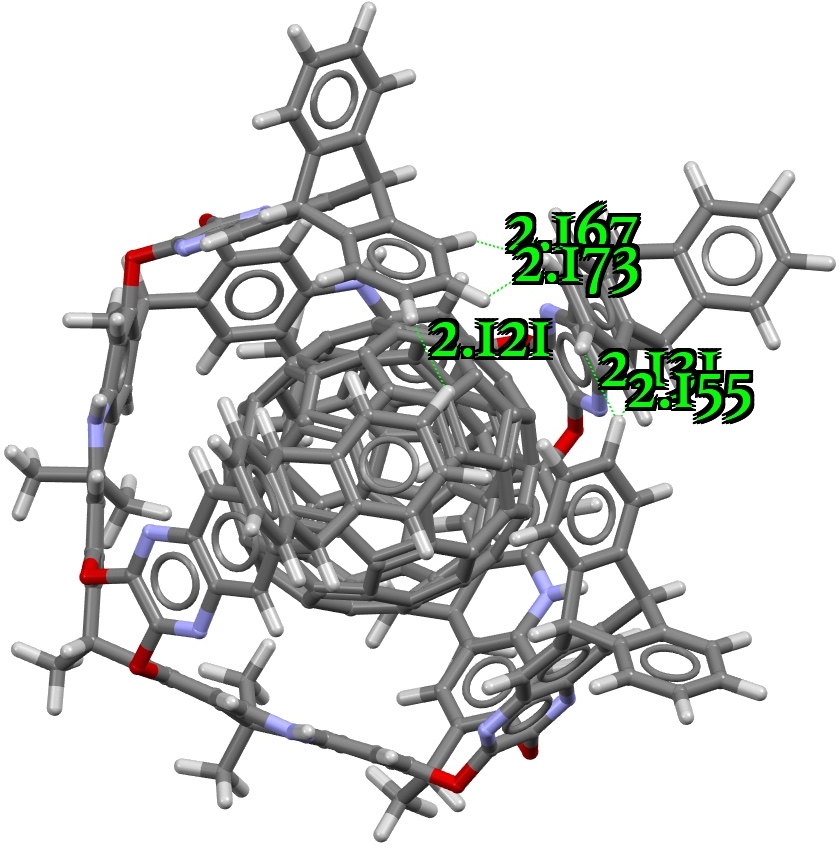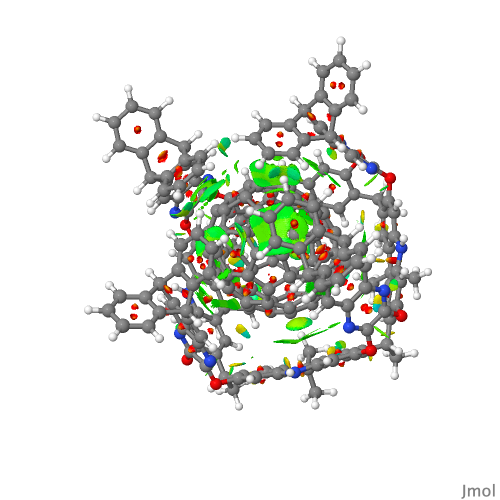In the previous post, I discussed how data associated with two of the candidates for molecules of the year – 2022 could be retrieved and then used to inspect their three dimensional structures. Here I focus on the ultra large cavitands recently reported[cite]10.1002/anie.202209885[/cite]. As I noted, these have an associated data coordinate archive published on Zenodo (DOI: 10.5281/zenodo.6953961) although this is not cited in the article itself.

Shown below are the coordinates of the A4-T molecule containing C70, the first being optimized at the PM6 level and the second at the PM7 level. The most obvious difference is that all the close C-H…H-C contacts of the host molecule shrink from between ~4Å to 2.6Å at PM6 geometries, down to about 2.1Å for PM7, a contraction of at least 0.5Å. Also, the gap between the host and the guest reduces from around 4.2Å to 3.45 Å (a distance typical of π-π stacking by the way), a significant reduction of ~0.75Å. Click on the two images below to view this model.


The difference in the dispersion terms for these two geometries emerges as 36.6 kcal/mol lower for the PM7 optimised geometry compared to the original PM6 geometry, a significant stabilisation. FAIR data is at DOI: 10.14469/hpc/12022 if you want to analyse the cavity sizes further.
Shown below is the NCI (non-covalent-interaction) surface, computed at the PM7 geometry and using the MNDO wavefunction. This illustrates the stabilisations occuring from the non-covalent density (takes a little while to load).

This post has DOI: 10.14469/hpc/12027